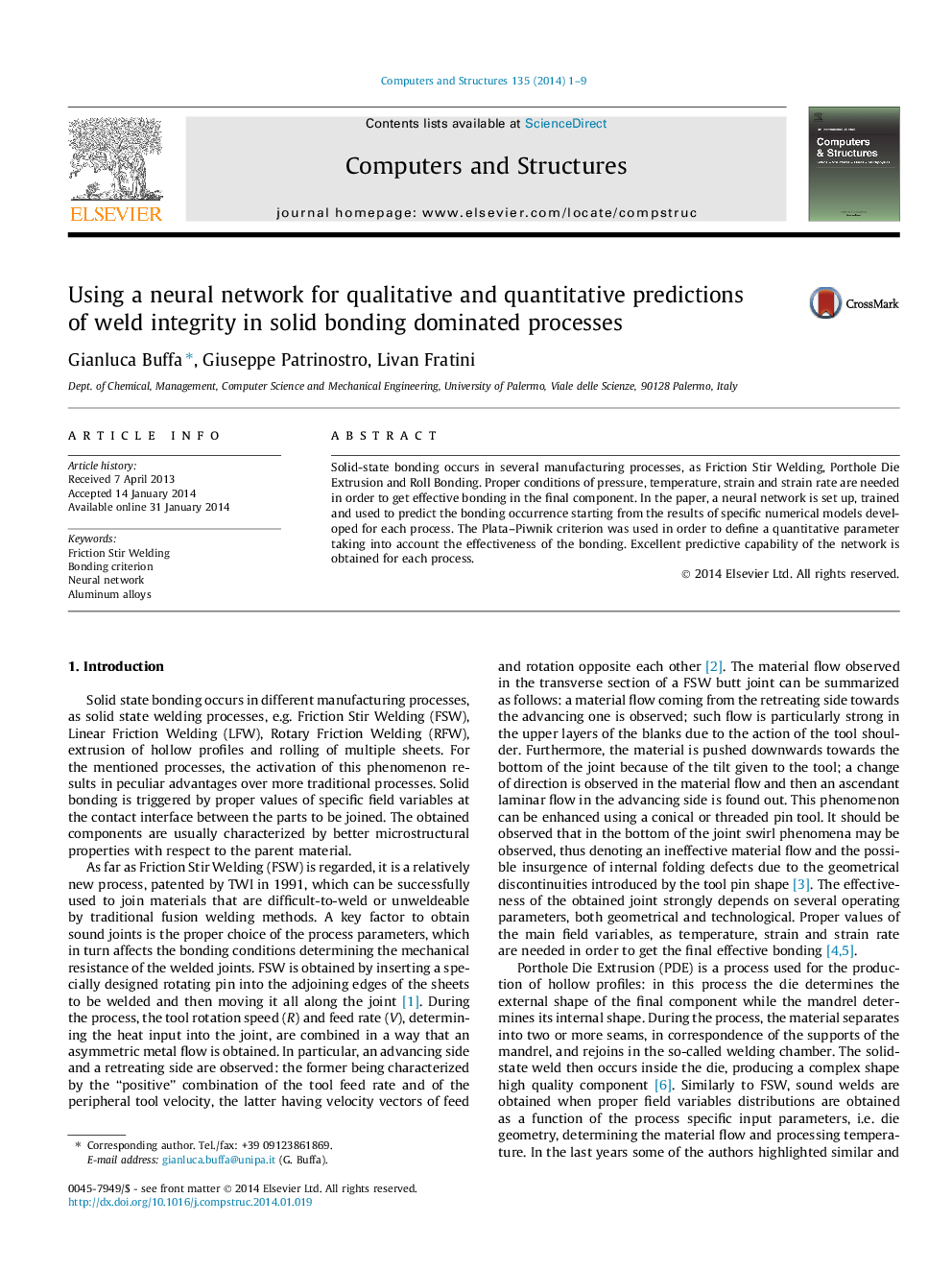| Article ID | Journal | Published Year | Pages | File Type |
|---|---|---|---|---|
| 509783 | Computers & Structures | 2014 | 9 Pages |
•Solid bonding is strongly affected by the evolution of temperature, strain, strain rate and pressure.•In FSW the separation surface, initially vertical, moves assuming the so called zig-zag shape.•Similar trends of the filed variables are observed for FSW, Porthole Die Extrusion and Roll Bonding.•The developed network is able to correctly predict the occurrence of solid bonding.•The use of two output indicators is particularly effective when threshold conditions occur.
Solid-state bonding occurs in several manufacturing processes, as Friction Stir Welding, Porthole Die Extrusion and Roll Bonding. Proper conditions of pressure, temperature, strain and strain rate are needed in order to get effective bonding in the final component. In the paper, a neural network is set up, trained and used to predict the bonding occurrence starting from the results of specific numerical models developed for each process. The Plata–Piwnik criterion was used in order to define a quantitative parameter taking into account the effectiveness of the bonding. Excellent predictive capability of the network is obtained for each process.
